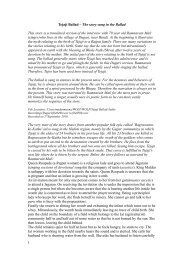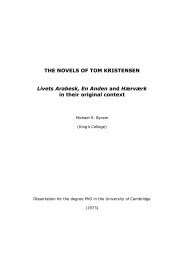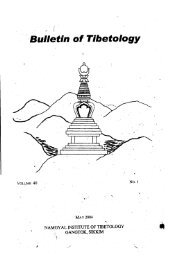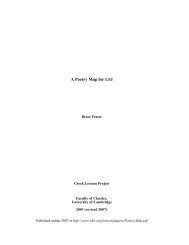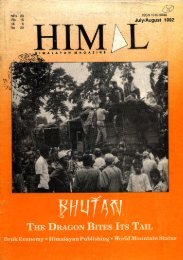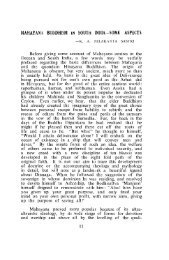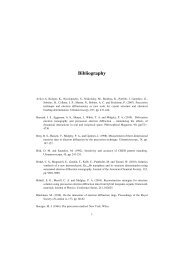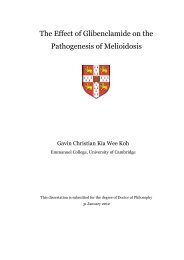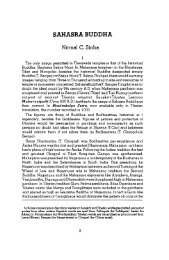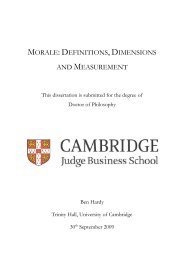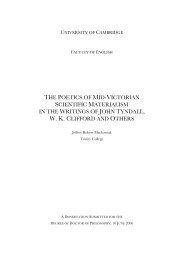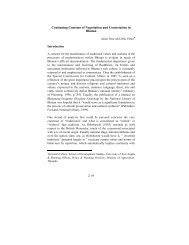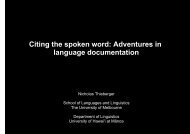The Crusades, the Genoese and the Latin East - DSpace at ...
The Crusades, the Genoese and the Latin East - DSpace at ...
The Crusades, the Genoese and the Latin East - DSpace at ...
You also want an ePaper? Increase the reach of your titles
YUMPU automatically turns print PDFs into web optimized ePapers that Google loves.
consuls of <strong>the</strong> commune in Genoa <strong>and</strong> often appear in <strong>the</strong> contemporary <strong>Genoese</strong> sources. Rosso<br />
della Volta had been to Alex<strong>and</strong>ria <strong>and</strong> Engl<strong>and</strong> <strong>and</strong> negoti<strong>at</strong>ed with Saladin as well as Richard<br />
<strong>the</strong> Lion Heart. In <strong>the</strong> light of <strong>the</strong> prominence of <strong>the</strong>se people it is interesting th<strong>at</strong> apparently<br />
some of <strong>the</strong>m did not return alive from <strong>the</strong> Third Crusade. <strong>The</strong> retired consuls Spezzapietra<br />
(1182; 1188) Nicola Embriaco (1176; 1179; 1185; 1188) <strong>and</strong> Simone Doria (1176; 1180; 1186;<br />
1188) are not known to have returned to Genoa or remained in <strong>the</strong> east. <strong>The</strong>ir names, which often<br />
appeared in documents <strong>and</strong> in <strong>the</strong> annals before <strong>the</strong> crusade, are not mentioned again in any of <strong>the</strong><br />
contemporary sources. <strong>The</strong>y could have perished or been taken captive, <strong>the</strong>re is no way of telling.<br />
This is interesting because <strong>the</strong>y were <strong>the</strong> leaders of <strong>the</strong> <strong>Genoese</strong> crusade <strong>and</strong> it is rare to find<br />
people in such position fighting <strong>and</strong> perishing <strong>at</strong> war. Ano<strong>the</strong>r <strong>Genoese</strong>, Rubaldo de<br />
Bontommaso, was held in captivity in Egypt <strong>at</strong> <strong>the</strong> beginning of 1192, where he probably<br />
died; 35<br />
his own gr<strong>and</strong>daughter married Filippo Spezzapietra in 1200 36 It is interesting to imagine <strong>the</strong><br />
marriage of two <strong>Genoese</strong> whose ancestors perished in different circumstances during <strong>the</strong> Third<br />
Crusade. <strong>The</strong>se fragments of evidence are wh<strong>at</strong> known about <strong>the</strong> <strong>Genoese</strong> contribution to <strong>the</strong><br />
crusade. <strong>The</strong> fact th<strong>at</strong> <strong>the</strong> <strong>Genoese</strong> help, <strong>the</strong>ir dedic<strong>at</strong>ion <strong>and</strong> bravery were remembered years<br />
l<strong>at</strong>er, to be explicitly re-rel<strong>at</strong>ed by Henry of Champagne, is ano<strong>the</strong>r sign of <strong>the</strong> gap left in <strong>the</strong><br />
narr<strong>at</strong>ed history.<br />
<strong>The</strong> appointment of Guido Spinola as a represent<strong>at</strong>ive of <strong>the</strong> <strong>Genoese</strong> in <strong>the</strong> <strong>L<strong>at</strong>in</strong> <strong>East</strong> is<br />
ano<strong>the</strong>r indic<strong>at</strong>ion of <strong>the</strong> seriousness in which <strong>the</strong> crusade was perceived by <strong>the</strong> <strong>Genoese</strong>. Guido<br />
was an elected consul of <strong>the</strong> year 1189 in Genoa itself, which means th<strong>at</strong> he was <strong>the</strong> actual leader<br />
of <strong>the</strong> enterprise. He remained in <strong>the</strong> <strong>L<strong>at</strong>in</strong> <strong>East</strong> <strong>and</strong> became <strong>the</strong> local represent<strong>at</strong>ive of <strong>the</strong><br />
<strong>Genoese</strong> commune in <strong>the</strong> kingdom of Jerusalem for a couple of years. This was not an easy<br />
mission. He had to manoeuvre between various rival powers; a struggle over <strong>the</strong> throne of<br />
Jerusalem, <strong>and</strong> l<strong>at</strong>er on, between <strong>the</strong> vigorous monarchs who joined <strong>the</strong> turmoil <strong>and</strong> amply<br />
contributed to it. During th<strong>at</strong> time, a ruthless competition over concessions began. L<strong>and</strong>s, legal<br />
rights <strong>and</strong> property were promised to naval <strong>and</strong> l<strong>and</strong> forces <strong>and</strong> fought over before <strong>the</strong> territory<br />
was even recovered from <strong>the</strong> Muslims. Between 1187 <strong>and</strong> 1191, Count Raymond III of Tripoli,<br />
Conrad of Montferr<strong>at</strong> <strong>and</strong> King Guy of Lusignan issued charters to <strong>the</strong> three Italian powers, <strong>the</strong><br />
<strong>Genoese</strong> amongst <strong>the</strong>m. <strong>The</strong>se records sometimes contradicted one ano<strong>the</strong>r <strong>and</strong> changed in<br />
accordance with <strong>the</strong> political transform<strong>at</strong>ions. It is very significant to find a person<br />
like Guido<br />
Spinola <strong>at</strong> <strong>the</strong> head of <strong>the</strong> commune <strong>at</strong> th<strong>at</strong> stage, <strong>and</strong> as will be discussed in chapter five, it<br />
contributed much to <strong>the</strong> fast recovery of <strong>the</strong> commune in <strong>the</strong> <strong>L<strong>at</strong>in</strong> <strong>East</strong>. Interestingly, this was<br />
also an opportunity for individual <strong>Genoese</strong> to acquire possessions <strong>and</strong> new st<strong>at</strong>us in <strong>the</strong> <strong>L<strong>at</strong>in</strong><br />
33 GC, 1192, no. 1504, an act from 22 January 1192. See more about Rubaldo in Chapter Three.<br />
36 Guglielmo di Sori, MS 102, p. 158, R1.<br />
25



